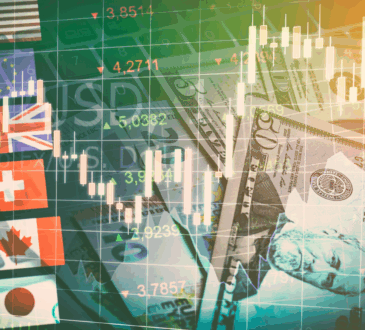
The US dollar has been falling for over a year and that has ramifications for investors across the globe. Predicting currency movements is nigh-on impossible, but it’s important for investors to understand how they affect their investments.
The dollar index measures the US dollar’s value against a basket of six key currencies: the euro, the Japanese yen, pound sterling, the Canadian dollar, the Swedish krona and the Swiss franc.
As you can see from the chart, the index can be volatile. The dollar hit a 20-year high in September 2022, before falling 12.5 per cent over the next 10 months, and then rising about 7 per cent to early October.
The dollar normally rises when the US Federal Reserve raises interest rates (which it has being doing over the past 18 months) as overseas investors flock to US bonds because of the higher yields that they offer. But now, the “greenback” is “overvalued pretty much however you measure it”, according to Samuel Zief from JPMorgan Private Bank.
While Zief thinks that the dollar could strengthen over the next three months or so, he expects it to be lower this time next year than it is today.
The US dollar is the world’s reserve currency, so it’s important for a lot of financial products. Here’s how some assets might fare if the dollar weakens.
Commodities
Assets that are denominated in US dollars should do well if the dollar weakens. Put simply, if the denominator gets smaller, the price goes higher. A weak US dollar makes dollar-denominated assets cheaper to buy with other currencies.
This should make commodities attractive: all of the main raw materials are priced in US dollars, except for cocoa, which is priced in sterling. You could play this through a broad commodity exchange traded fund (ETF), such as the WisdomTree Enhanced Commodity ETF.
• Tell Sid not to bother buying NatWest shares
• How buying gold could have put a shine on your portfolio
Within commodities, gold is likely to be the biggest winner — it hit a record high of over $2,100 last week, at which point it had climbed 16 per cent in the space of two months.
Gold is benefiting from a number of different trends: US dollar weakness, central banks buying bullion, expectations that real interest rates will fall, and geopolitical turmoil. “Gold is a good place to position if you are of the view that the dollar will weaken,” Zief said.
Consider the iShares Physical Gold exchange traded commodity (ETC) or the Invesco Physical Gold ETC.
Emerging markets
Historically, when the dollar has been strong, the stock markets of emerging countries have performed worse than developed markets. These periods occurred between 1995 and 2000, and 2012 and 2015.
By contrast, emerging market equities performed well between 2003 and 2007, 2009 and 2012 and 2017 and 2018 — periods when the dollar was weak.
The reason is that many developing nations borrow in US dollars, said Russ Mould from the investment platform AJ Bell. So weakness in their currency relative to the dollar means it’s more expensive to afford the interest on that debt and to repay their loans.
The opposite is also true: if the dollar is weak relative to their currency, it is cheaper for them to borrow and to service their debts.
You could consider a cheap index-tracking fund to take advantage of this, such as the iShares Core MSCI EM IMI ETF or the Fidelity Index Emerging Markets fund.
What about my shares?
When the dollar is weakening it tends to mean that global economic growth and, consequently, appetite for risk are strong. This can be positive for equities.
A weaker dollar means that it’s cheaper for non-US companies with US supply chains to import goods. It also means that US exporters’ goods and services are cheaper for overseas customers to buy.
But a weaker dollar can also have a negative impact on companies that sell a lot of goods and services to Americans because those US earnings become worth less when converted back to their base currency, said Victoria Scholar from the investment platform Interactive Investor.
Jason Hollands from the wealth manager Evelyn Partners suggested that this could lead some investors to favour UK small and mid-cap companies, rather than their large-cap counterparts in the FTSE 100.
If you own shares in an ETF that tracks the performance of America’s S&P 500, a weak dollar relative to the pound will affect your returns. Many will own these funds, so currency movements can have big impacts.
In 2022 the dollar was strong against the pound, which cushioned UK-based investors from the sharp fall in the S&P 500. The S&P 500 lost 18.3 per cent in dollar terms, but was only down 8.4 per cent in sterling terms.
But Hollands warned that the reverse is also true. “If the dollar continues to weaken that could prove an additional headwind for those UK investors who are heavily exposed to US and global equity funds.”
In the long term these peaks and troughs tend to even out. In the past five years the Vanguard S&P 500 ETF is up 81.5 per cent in US dollar terms and has gained 83.3 per cent in sterling terms.

